User Experience and Your Help Desk: What Your Business Should Know
by Stephanie Faris on Monday, February 22 6:00
Businesses are focused on usability, from the products they sell to the way they market. When businesses see things from a customer s perspective, they design experiences that are more likely to convert.
Information technology professionals now implement usability concepts in their projects and operational procedures. One area that regularly impacts end users is the help desk. When IT departments consider user experience in the way the help desk is set up, they can prevent negative experiences and maintain high levels of customer service. Here are a few areas a business s help desk system can put user experience to work.
Placing a Ticket
Whether end users call, send an email, or use an online form to place a help desk ticket, take time to see your submission process through the eyes of the customer. Record calls and audit your team occasionally to ensure they re following your policies on responding to calls. Make sure your help desk form is easy to find and that customers have a way to request help even when the network is down.
Invest in Training
The most important aspect of any help desk is the customer service it provides. In addition to basic customer service training, your customer-facing technicians need regular training that will help them develop basic PC troubleshooting skills. This will prevent time-consuming escalations, since junior team members can gradually progress to senior technicians. It will also improve morale as employees see they re building toward future advancement.
Set Up SLAs
Third-party IT providers use service-level agreements (SLAs) to commit to ticket resolution times. This same practice can be put in place by in-house IT departments. Your team can set up SLAs for each ticket that comes in, based on priority. To ensure those SLAs are honored, create rules in your help desk ticketing software that escalate tickets after they remain in a certain status for a designated period of time. A high-priority ticket may be escalated to a senior technician after two hours, for instance, then a manager after two additional hours. Medium-priority tickets may have escalation periods as long as 24 or 48 hours. When your technicians realize this type of escalation is a possibility, they ll be more likely to close tickets quickly.
Solicit Feedback
If you want to know if your end users are satisfied with the service they re receiving, ask. In addition to deploying surveys with each ticket resolution notification, regularly ask specific questions of your users. Reward employees who consistently get high ratings and conduct reviews on each employee where you include user feedback as part of the evaluation process. When your employees know good customer service is an important job requirement, they ll be more likely to work hard at it.
When help desk teams look at their activities through end users viewpoint, they re more likely to create a positive experience. Usability should be a top consideration in everything an IT department does, from its ticketing processes to its customer surveys. Happier users mean job security for IT teams, who will show their value to an organization with every ticket they close.
